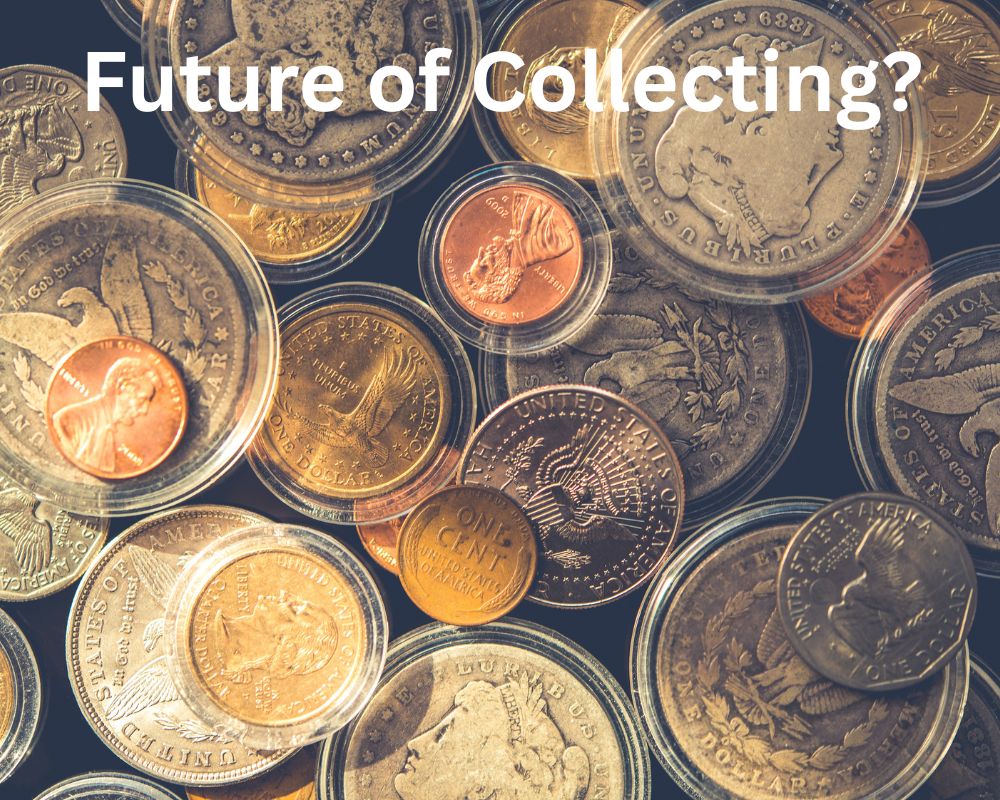Bellevue 425-454-1283 · Lynnwood 425-672-2646 · Issaquah 425-392-0450 · Tacoma 253-328-4014

Culture evolves over time, and with it, the hobbies that we all enjoy. There was a time when collecting stamps (or Beanie Babies, for that matter!) was all the rage – now, you’d be hard pressed to find many collectors of either. Are coins heading in the same direction?
We think not! But as a hobby with a long and storied history, it’s worth exploring the future of coin collecting and where it may be heading in the next few decades.
As we explored in our coin collecting trends article, demand from coin collectors is quite strong. A market research study indicates that coin collecting is set to grow at 5.09% between 2025 and 2035. While that’s not mind-boggling growth by any means, it does indicate a growing demand – at least in terms of the dollar value of coins changing hands.
Around 38% of American adults have either collected coins in the past, or are active collectors today. Data on new collectors is somewhat sparse, but that’s a huge pool of potential coin collectors!
“Evolve or Die” is not just a phrase, it’s often true. Hobbies, like anything else, must evolve to stay relevant as culture and economies shift over time.
So, how is the coin collecting industry and hobby shifting?
Interestingly, bullion (gold coins, silver bars, etc.) is often the “gateway” to coin collecting, these days. Bullion demand is strong from the investor angle, as people seek to diversify their portfolios and/or hedge against inflation. And as people start to learn about collectible bullion coins (American Gold Eagles, buffalos, silver eagles, etc.), some start to develop an interest in other collectible coins, too.
The largest population of active coin collectors remains the Baby Boomer generation. Questions remain around the future of coin collecting as this population starts to shrink. Will younger generations step in to fill the gap?
The answer is difficult to pin down, but it’s unlikely that enough Millennials, Gen Z’ers, etc. will get into coin collecting to replace the number of older folks. So, it’s likely that the total population of coin collectors may begin to shrink, at least here in the U.S. But that doesn’t necessarily mean that the size of the industry or hobby will shrink accordingly.
In the COVID era, demand for collectible investments skyrocketed. The values of coins, luxury watches, collectible cards and more surged, as people found themselves with more time and money on their hands.
That surge has weakened – but it has likely permanently changed the investing landscape. Combined with continued volatility in traditional asset markets, interest in investment alternatives remains high.
A report from JP Morgan found that “alternative investments” made up more than 15% of the total asset universe in 2025. Of course, “alternative investments” include things like private equity and private credit – but collectibles are also included. As people continue to seek to diversify investment holdings, rare coins remain a powerful option.
Coin collecting aside – what about the future of coins themselves? As we’ve seen monetary policy evolve, and cultural shifts away from using physical currency, where is the future of money heading?
It’s undeniable that use of physical cash is declining and will continue to decline. However, it’s very unlikely that cash will be done away with entirely in our lifetimes. And even if mints stop producing new coins, that could potentially increase demand for older coins, and drive a resurgence of coin collecting.
Ultimately, only time will tell us what lies ahead for the future of coin collecting. Where do YOU think things are heading?